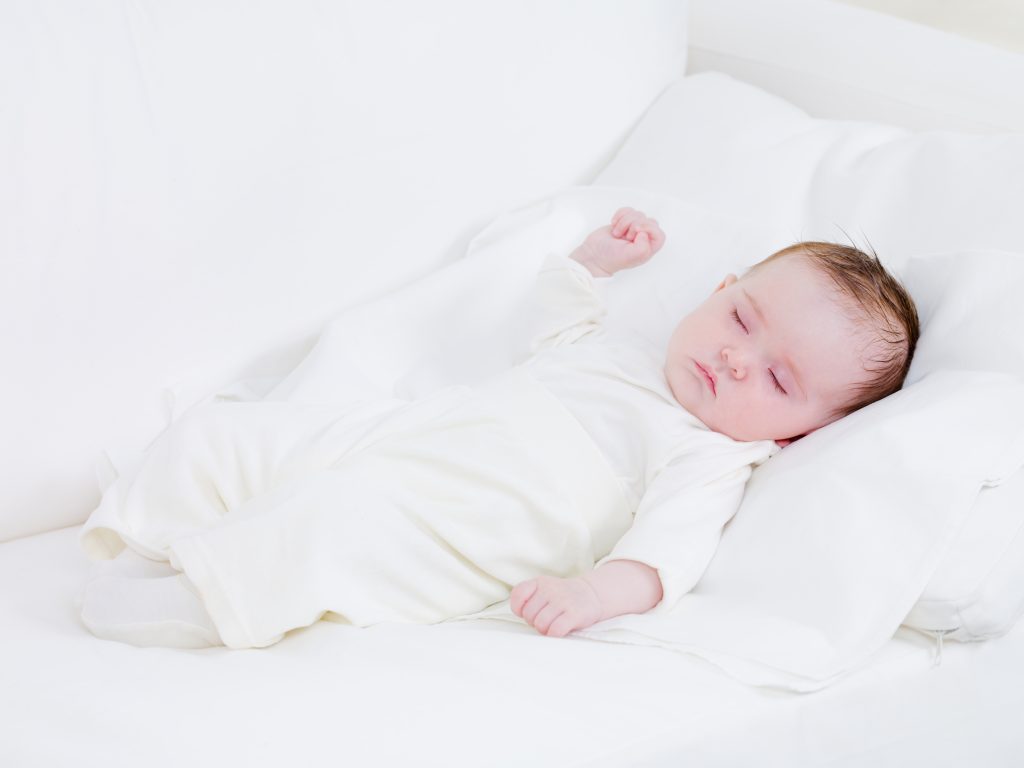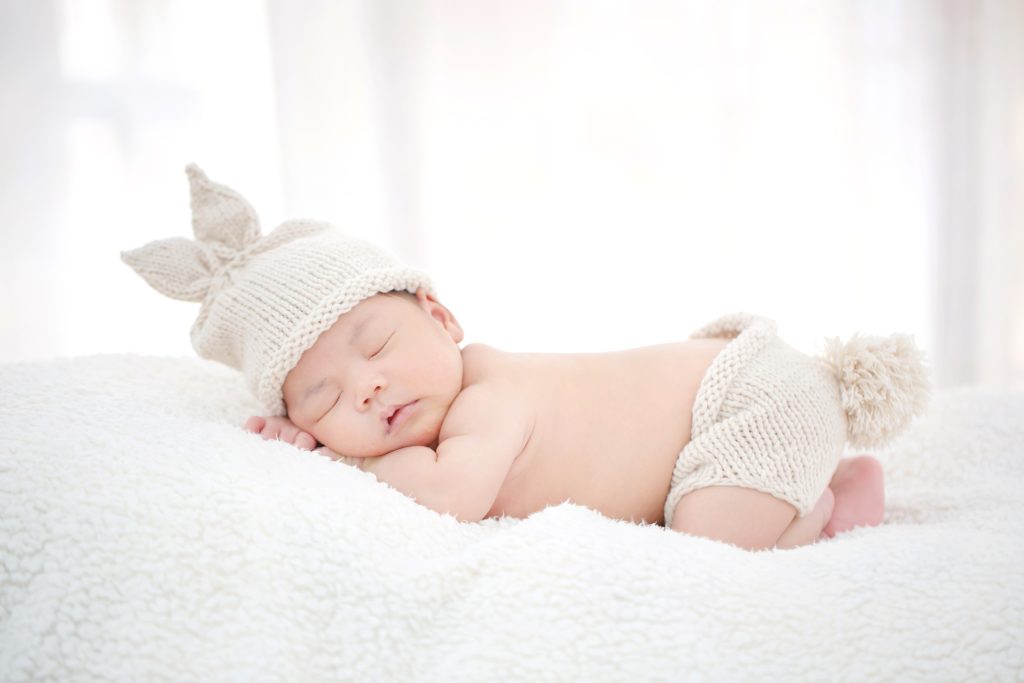As a new parent, your night’s peace depends on your baby’s comfort. Are you unsure how to dress your little baby for sleep? It’s a delicate balance – too warm and they’ll overheat, too cold and they’ll wake up.
So, let’s unravel this mystery together. We’ll explore the ideal sleep temperature, signs of discomfort, and safe sleepwear options.
After all, you’ve got enough on your plate without worrying about the perfect baby bedtime attire!
How Should You Dress a Baby for Sleep?
When it’s time to put your baby to bed, you should ensure they’re dressed in comfortable, temperature-appropriate sleepwear to promote a safe and restful sleep.
But how should you dress your baby for sleep? First, consider the temperature of the room. If it’s warm, a light onesie may suffice.
For cooler rooms, opt for a heavier sleep sack or wearable blanket. Don’t forget to skip the loose blankets, pillows, or stuffed animals, as they can pose a suffocation risk.
Make sure the sleepwear isn’t too tight, especially around your baby’s chest and waist.
What is the best temperature for baby sleep?
Keeping your baby’s room at the ideal temperature is crucial for their comfort and safety during sleep. Experts recommend a room temperature between 68-72 degrees Fahrenheit (20-22 degrees Celsius) as the best for a baby’s sleep.
A room too hot can increase the risk of Sudden Infant Death Syndrome (SIDS), while a room too cold can lead to hypothermia. It’s important to regularly check the nursery’s temperature.
If it’s too warm, adjust your heating settings or use a fan to circulate air. If it’s too cold, you might need to use a safe space heater or increase the thermostat.
What are the signs your baby is too hot while sleeping?
In light of the room temperature, you’ll need to be alert for signs that your baby is too hot while sleeping. Overheating can be dangerous, so it’s important to know what to look for.
Some key signs your baby may be too hot include:
- Sweating: If your baby’s forehead or neck feels sweaty, they’re likely too warm.
- Flushed cheeks: Overheating can cause a red, flushed appearance.
- Rapid breathing: Monitor your baby’s breaths. Faster breathing can indicate they’re too hot.
- Restlessness: If your baby is unusually fussy or uncomfortable, check their temperature.
- Heat rash: Look for small red bumps on your baby’s skin.
Always remember, it’s better to dress your baby in lighter layers that can be added or removed as needed.
What are the signs your baby is cold at night?
Just as you need to watch for signs of overheating, you should also be aware of signals that your baby might be too cold at night. If your little one’s hands and feet are cooler than the rest of their body, they might be too cold. A cold, red nose is another sign to look out for.
Beyond physical signs, a fussy and restless baby can also indicate that they’re uncomfortable because of the temperature. Don’t only rely on these visible signs; trust your instincts too. If you think your baby might be cold, add an extra layer of clothing or adjust the room temperature.
Should You Swaddle Your Baby?
Should you swaddle your baby? It’s a question you might be asking as you navigate the world of newborn sleep.
Let’s explore the basics of swaddling, its benefits, and when it might be time to stop.
How to Swaddle a Baby
While you might be wondering if swaddling your baby is necessary, it’s important to know that it can provide comfort and help your little one sleep better. Swaddling mimics the cozy, snug feeling of the womb, leading to a more serene sleep for your infant.
Here’s a simple guide on how to swaddle your baby:
- Lay a blanket out flat, turning one corner down.
- Place your baby on their back on the blanket, with their head at the folded corner.
- Wrap the left corner over your baby’s body, tucking it underneath.
- Fold the bottom corner up over your baby’s feet.
- Finally, wrap the right corner around your baby, tucking it in securely.
Tips for Baby Sleepwear
In choosing your baby’s sleepwear, it’s crucial to consider a few key factors for their comfort and safety. Opt for breathable fabrics like cotton to prevent overheating. Ensure the fit isn’t too tight or loose; it should be snug, but not restrictive. Avoid items with buttons or snaps that could pose a choking hazard. Also, stay clear of clothes with strings or ties, as they can be dangerous.
Choose sleepwear with a simple design, preferably a one-piece with a zipper for easy diaper changes. Be mindful of the room temperature and adjust your baby’s clothing accordingly. Remember, a good rule of thumb is to dress your baby in one more layer than you’d wear yourself.
Follow these tips, and you’ll ensure your baby sleeps safely and comfortably.
Recommendations for Safe Sleeping
Building on choosing the right sleepwear, it’s also crucial to consider proper sleeping arrangements to ensure your baby’s safety. A safe sleep environment can significantly reduce the risk of Sudden Infant Death Syndrome (SIDS) and other sleep-related infant deaths. Here are some recommendations:
- Always place your baby on their back to sleep, for both naps and at night.
- Use a firm sleep surface, such as a mattress in a safety-approved crib, covered by a fitted sheet.
- Avoid using pillows, blankets, or crib bumpers that can pose a suffocation risk.
- Keep soft objects, toys, and loose bedding out of your baby’s sleep area.
- Make sure the baby’s sleep area is in the same room where you sleep until your baby is at least 6 months old.
Conclusion
Dressing your baby for bed doesn’t have to feel like a guessing game. Keep them cozy, not too hot or cold. Look for signs they’re uncomfortable, like sweating or cold hands.
Swaddling can be a game changer, and choosing the right sleepwear is crucial. Always prioritize safety.
Remember, what works for your baby might be different from others. So, trust your instincts and keep your baby’s comfort in mind.
Sweet dreams!
Reference:
https://rednose.org.au/article/how-to-dress-baby-for-sleep
https://www.sleepfoundation.org/baby-sleep/how-to-dress-baby-for-sleep

